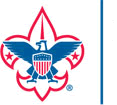Advancement

Troop 5749 Advancement Program
In Scouts BSA you earn recognition for learning skills, showing leadership, studying hobbies, science or professions, and community service. The recognition process is called “Advancement” .
The Scout Handbook– Both scouts and parents should become familiar with the contents of the official Scout Handbook, as it will provide answers to many questions. Descriptions of the requirements for each Scout rank, Scout Skill Awards and several key merit badges are covered in the book. As your
Scout Ranks – The first four ranks (Scout, Tenderfoot, Second Class  and First Class) must be obtained in sequence, but can be worked on simultaneously. A detailed list for each rank is listed in the handbook. These first four Ranks are oriented toward learning and practicing skills that will help you develop confidence and fitness, introducing you to civic responsibilities, and preparing you for exciting successes in Scouting. Earning these Ranks will also give you a chance to show leadership among the younger Scouts. They will also learn to work together which is often more essential than rank advancement. After you earn the Rank of First Class, the Advancement program mostly involves earning “Merit Badges,” participating actively in Troop activities and serving in Troop leadership positions. It usually takes a few more years to earn these Ranks, called Star, Life and finally Eagle. To earn the Rank of Eagle, a girl also needs to lead her fellow Scouts in a big project that accomplishes something important for her community.
and First Class) must be obtained in sequence, but can be worked on simultaneously. A detailed list for each rank is listed in the handbook. These first four Ranks are oriented toward learning and practicing skills that will help you develop confidence and fitness, introducing you to civic responsibilities, and preparing you for exciting successes in Scouting. Earning these Ranks will also give you a chance to show leadership among the younger Scouts. They will also learn to work together which is often more essential than rank advancement. After you earn the Rank of First Class, the Advancement program mostly involves earning “Merit Badges,” participating actively in Troop activities and serving in Troop leadership positions. It usually takes a few more years to earn these Ranks, called Star, Life and finally Eagle. To earn the Rank of Eagle, a girl also needs to lead her fellow Scouts in a big project that accomplishes something important for her community.
Signing Off Requirements– To have the requirements signed off, the Scout needs to ask someone to sign it. Older Scouts with First Class and above are authorized to sign the requirements for Scout, Tenderfoot, and Second Class. If an older scout is unavailable to test and sign off for the requirement
Scout Spirit– In addition to the skills and Merit Badges required for each rank, Scouts must also show Scout Spirit. Scout Spirit includes a number of elements such as participation, contribution, leadership and maturity relative to rank. It also includes making effort to live by the Scout Law in their daily lives.
Scoutmaster Conference– At the completion of each rank, the Scout is required to schedule a Scoutmaster conference and these are often held during the regular troop meetings. The Scout has the responsibility to request a conference and then the Scoutmaster or an Assistant Scoutmaster will meet with the scout to talk over and check that the Scout has fulfilled all rank requirements and also measure the Scout’s readiness for advancement. Scouts should dress neatly in uniform for their conferences. The exact parts of the uniform required are different for the lower and upper ranks, see uniform section below.
Board of Review– Boards of Review are also a part of rank advancement. Committee members interview scouts who have passed their Scoutmaster conferences to both formalize their achievements and to obtain feedback about the troop and the scout’s experience in it. The Board of Review is an opportunity to engage in conversation. It is not intended to be an examination or a retesting.
Court of Honor– The purpose of a Court of Honor is to recognize the accomplishments of the scouts. It is to acknowledge and appreciate the ranks, Merit Badges and leadership roles earned by the Scouts since the last Court of Honor. They are usually held quarterly in the church sanctuary.
BSA References to Advancement:
The Troop is governed by the BSA Guide to Advancement that can be found here: http://www.scouting.org/filestore/pdf/33088.pdf
Record-Keeping
The advancement records are kept by the troop Advancement Chair, the Council office, and most importantly by the Scout. The Council office keeps records supplied to them by the
When a Scout passes their Board of Review for rank advancement, the Advancement Chair will ask to take the scout’s handbook in order to record the rank requirements that have been met.
It is recommended that the Scout create a binder to contain all their scout history records. A well maintained history would include:
- Completed and signed blue merit badge cards
- Wallet-sized certificate cards for rank advancement
- Scout participation log – include dates and title of the scouting event, number of camping nights, and miles hiked.
- Any certificates or special awards earned
Make sure all history items are signed or initialed by the appropriate Scout leader. Make copies of signed rank requirement pages in the scout handbook in case the book is lost during an outing. Protect your blue cards and rank certificates in plastic protector pages that are designed for baseball and other sports cards.
Please keep all scouting records in a safe place. If it should happen that there is a discrepancy or missed record, your personal records are your most important ally in proving what you completed and when.



You must be logged in to post a comment.